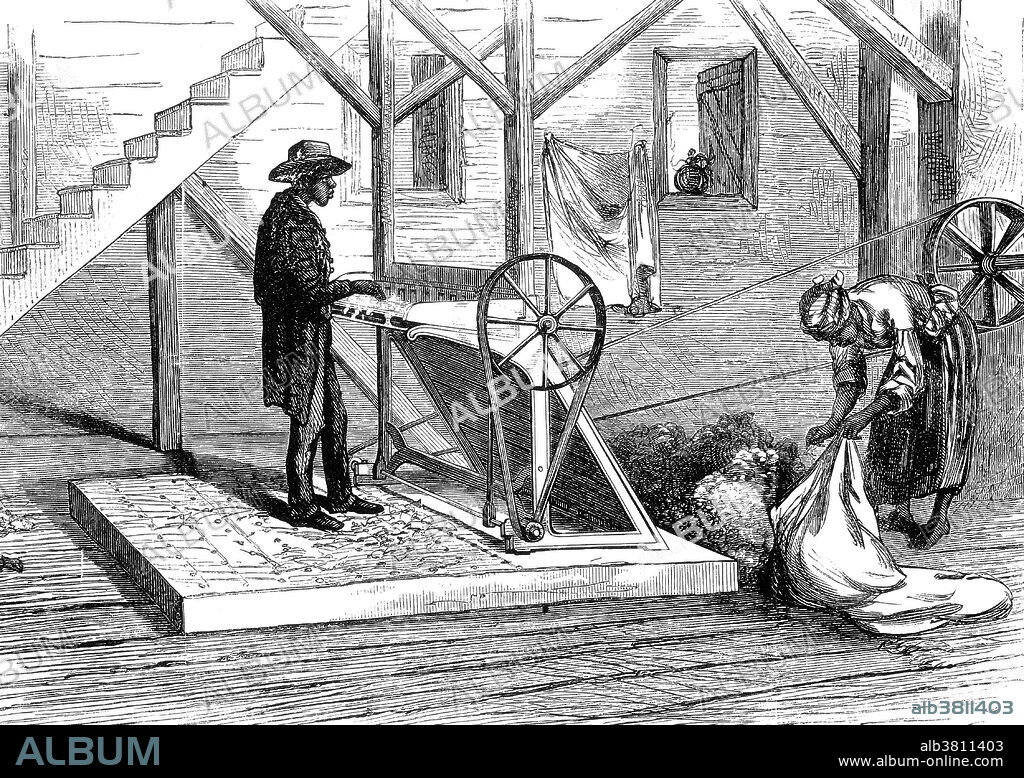alb3811403
Cotton Gin, 19th Century

|
Zu einem anderen Lightbox hinzufügen |
|
Zu einem anderen Lightbox hinzufügen |



Haben Sie bereits ein Konto? Anmelden
Sie haben kein Konto? Registrieren
Dieses Bild kaufen.
Nutzung auswählen:

Titel:
Cotton Gin, 19th Century
Untertitel:
Siehe automatische Übersetzung
A cotton gin is a machine that quickly and easily separates cotton fibers from their seeds, allowing for much greater productivity than manual cotton separation. The fibers are processed into clothing or other cotton goods, and any undamaged cotton was used for clothes. Seeds may be used to grow more cotton or to produce cottonseed oil and meal. The first modern mechanical cotton gin was created by American inventor Eli Whitney in 1793 and patented in 1794. It used a combination of a wire screen and small wire hooks to pull the cotton through, while brushes continuously removed the loose cotton lint to prevent jams. Whitney's gin revolutionized the cotton industry in the United States, but also led to the growth of slavery in the American South as the demand for cotton workers rapidly increased. No artist credited, undated.
Persönlichkeiten:
Bildnachweis:
Album / NYPL/Science Source
Freigaben (Releases):
Bildgröße:
4500 x 3185 px | 41.0 MB
Druckgröße:
38.1 x 27.0 cm | 15.0 x 10.6 in (300 dpi)
Schlüsselwörter:


 Pinterest
Pinterest Twitter
Twitter Facebook
Facebook Link kopieren
Link kopieren Email
Email
